It’s been cold, really cold. For a while I thought it was just that my new garden is on a very exposed site, and until the windbreaks really get going I’m going to have to put up with a late start to the season. Then I thought that maybe I was just making excuses for poor plantsmanship, and that the fact that my plants weren’t growing very fast was down to me. Finally though, I decided to check the statistics, and it really has been very cold for the time of year here in West Wales, lots of northerly winds, and temperatures several degrees below average for May. Then, just a couple of days ago on a smallholding facebook page, some kind soul, who has clearly been through the same process of self-doubt that I have, posted a soon-to-be enormously popular thread about the weather at the moment, and its effects on us gardeners. I was mightily relieved in that way that only the travails of others can achieve.
Broad beans of course grow away in pretty much all conditions which always has me thinking back to one particular year when I decided to leave the blackfly alone. There are lots of organic methods for foiling black fly: most of us pick the tips of broad bean plants; some spray with soapy water or carefully catch ladybirds to put them amongst the growing beans. But what if you just leave the blackfly alone?
There has to be a limit to this approach, and I think it is dictated by the state of nature in the place where you live. I’m afraid to say that if you haven’t seen a ladybird for years, and the only birds nearby are pigeons, if you get blackfly on your broad beans there might just be no predators to come along and eat them. In rich natural environments on the other hand, you might never see a build up in blackfly numbers; they’ll be there, but controlled except perhaps in extraordinary circumstances, hidden away, or on an already terribly weak plant.
I was working in a small organic garden in South Oxfordshire when I decided to follow through the logic of what I’d been reading and thinking about organic gardening and ecology.
The first thing you usually notice, is the arrival of the ants. The ants, black ones most often, are waiting for the winged aphids to land on your broad beans. The aphids will be protected and farmed by the ants which take the honeydew they excrete. You’ll see a few wingless aphids then, with an ant or two tending to them. Aphids reproduce by parthenogenesis, they’re born pregnant and can give birth 30 times in a 50 day lifetime. That’s how they cover plants so quickly.
Sometimes a whole stem will be black, bent and withered, the beans ruined. It’s a tragic sight.
So, bear with me here. Why would I leave plants to succumb to these little beasts? I guess we’ve all seen the David Attenborough programmes where an unfortunate shoal of herring gets attacked by every predator in the ocean, and from the sky above, and it all ends with a whale coming up from below and swallowing the whole lot! The blackfly, I thought, might just be like the herrings; the base of some garden feeding frenzy that we cut short with our intervention. How many plants would I need to lose before I could tell if I was right?
In an established organic garden like that one, as you’d expect, quite quickly there were ladybirds, and more importantly their voracious larvae, present in numbers around the aphids. There were clearly lots of other things too, flies and little wasps that there was no way I was going to identify. The ants were working hard to protect their herd, but the predators were increasing fast. This all started on one plant and soon spread to two or three others. That’s the other thing to bear in mind of course, healthy vigorous plants don’t tend to blacken and be overwhelmed, of course not, this is ecology we’re talking about not Biblical retribution.
From that first time, I have loved watching the busy life that builds up around broad bean beds. I was sitting watching, thinking. I dare say that had my boss seen me she might have thought I was day dreaming (that being the problem with bosses), when out of nowhere a bird swooped down and snapped something out of the air a couple of feet from my head. Okay, it wasn’t after the black fly, but here was my whale. I was half expecting the bird to be caught on the wing by a passing peregrine, but luckily for the bird that wasn’t to happen.
Since then I don’t take the tips of my broad beans, I just let happen what is going to happen. Now, I don’t want to propose this as a method for everyone. I don’t live mainly off my broad bean crop, I don’t even sell that many, never have. It’s a sure way to lose a few plants, that’s unarguable. But it’s an amazing thing to watch, and it might just be the best way to make the garden as whole and the land around it is richer than it was before, better for organic gardening in in the years to come.



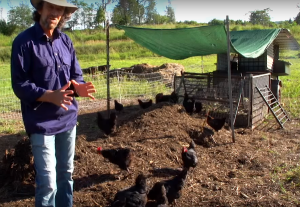
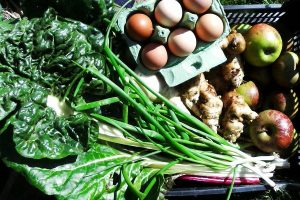
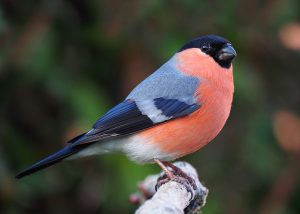
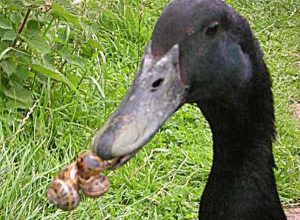
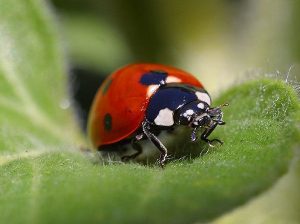

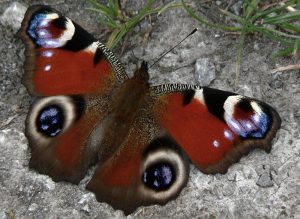

2 Comments
For folk interessted in the weather the Met Office produce monthly maps of absolutes and anomalies for all sorts of things, daily maximum temperatures, days of > 1mm rainfall etc: http://www.metoffice.gov.uk/climate/uk/summaries/anomacts
May was indeed cold, infact in terms of maximum daily temperatures it was the coldest May since 1996! And for many wetter than normal.
Brilliant! Thanks, Chris!